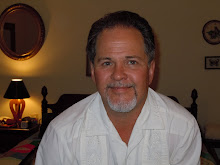Sunday, September 16, 2007
The Tongue...
I forgot to mention in my previous post that aside from creating pitch changes from the formation of vowel sounds in the oral cavity, the tongue is responsible for articulation. Articulation is a fancy word for starting and stopping the notes. If the air moves in a consistent stream from the lungs pushed by the diaphragm, then some mechanism must be created to start and stop the notes. There are several methods for stopping the air but using the tongue is the most preferable. Obviously because singers use these same methods, the addition of a mouthpiece and horn is just an extension of the singing process. In that regard is seems appropriate to teach vocal production first, but that rarely happens in public music education. When playing the trumpet the tip of the tongue should touch the base of the top teeth right at the roof of the mouth when articulating a note. This is the best place to articulate the stream of air coming from your lungs, because it doesn't STOP the air. It merely 'flicks' it. If you did as I did all the way through college, then you without knowing stopped the air completely by placing the tongue IN BETWEEN the upper and lower teeth. To someone that does not know any better, then is a functional method. The down side is it inhibits a pure sostenuto sound. Sostenuto is a fancy word for full and sustained. If you continually stop the air by placing the tongue between the teeth, then your phrases of music will not be continuous thus lyrical. They instead will be interrupted. As a result your intonation will be bad. Simply put without a full bodied air stream moving all the time, you are unlikely to play in tune. It is possible to stop the air stream by closing the throat, and this is bad. The throat should not act as a sphincter. It should be open with little to no tension. The trick is to maintain muscular tension in the chops and pressure in the diaphragm while keeping the throat relaxed. Meanwhile the tongue has to move quickly to start and stop notes and help with range by creating vowel sounds. I have found the easiest way to do get these mechanisms working quickly and efficiently is to buzz the mouthpiece. The Bill Adam trumpet method prefers buzzing the leadpipe. His argument is you will never play the trumpet like a kazoo so begin warming up by blowing air through a big tube. My problem with that is I would rather NOT pick up the horn at all when I warm up. I am trying to get my mental faculties in order to begin playing the trumpet. Instead of blindly physically trying to play the hardest instrument at once, I like to move slowly in that direction by isolating each one of these mentioned mental processes. Picking up the mouthpiece makes me think about it and what it has to accomplish to aid me in playing the trumpet. It has to buzz with an airtight seal, and I should be able to control the pitch (or literally play the mouthpiece) by just using my facial muscles, tongue, and air. If you can all ready do this, then it becomes much easier to play the daunting horn. You have all ready, like a vocalist, learned to control the mechanism that can produce quality sound without a horn. You are all ready one step ahead. When you warm up if you spend a few minutes thinking about each of these muscle groups and their function and spend the necessary time warming up those processes necessary to control them, then you will be ready to pick up the horn and play.
